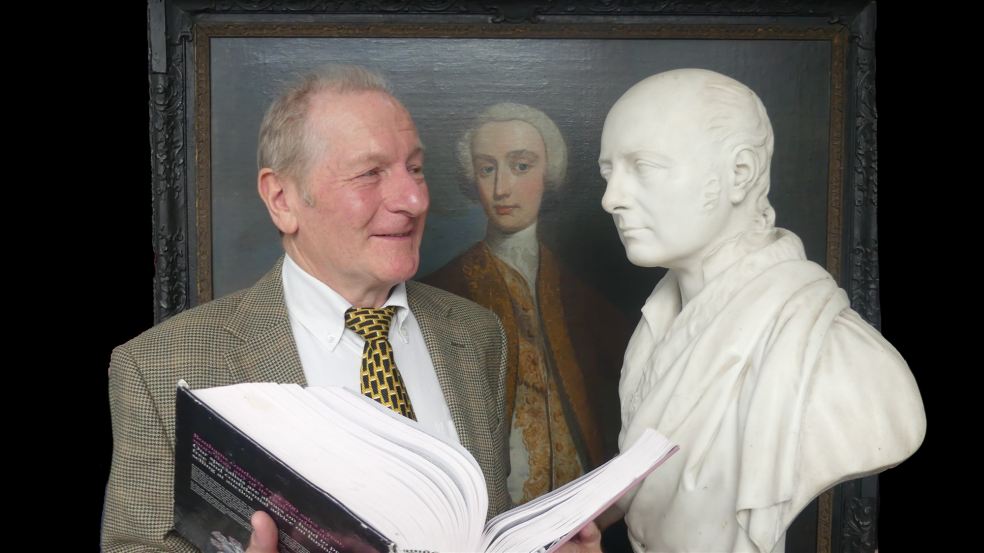
For sale - the head of George Putland!
An imposing marble bust created by renowned Irish sculptor Thomas Kirk is a heavyweight item in Chilcott Auctioneers’ November 18 sale, in more ways than one; this extremely heavy item required four people to carry it into the Dolphin Saleroom in Honiton’s High Street!
It’s the first time this sculpture has been sold, having been kept within the subject’s family for over 180 years.
Born in Cork in 1781, the sculptor attended the Dublin Society’s school, where he was awarded several medals for his art. He became well known for his fine carvings and relief work, still on display at the Royal College of Surgeons, the Royal Dublin Society and in the library of Trinity College, Dublin. After setting up his own studio in Dublin, Kirk became known for portrait sculpture. One of his most famous carvings was a statue of Nelson for a memorial column in O’Connell Street, Dublin which was destroyed in 1966 by an Irish republican.
From 1825 he regularly exhibited busts at the Royal Academy. His last major work was a life size statue of Admiral Sir William Sidney Smith, which can be seen today at the Maritime Museum in Greenwich.
His sculpture for auction at Chilcotts is a fine white marble bust of George Putland (1782-1841) which is displayed on a beautiful Connemara marble plinth. Connemara is one of the rarest forms of marble in the world with its distinctive colouring created by green minerals. In addition to naming and dating the piece, ‘George.Putland.1842’, the sculptor has carved his mark, ‘T.KIRK.RHA.FECIT’.
The subject, George Putland ,was the eldest son of a wealthy landowner and politician. The family started out in Dublin as blacksmiths but rose to become prosperous landowners and politically influential.
George Putland and his wife Nancy spent much of their life in Bray, County Wicklow. They were philanthropists; helping a local school for impoverished Catholic children and providing pensions for widows of fisherman lost at sea. Each year they held a harvest home for their tenants, arranging for food and entertainment as well as the distribution of clothing for the families.
Putland was very much the aesthete; he was an avid book collector and had an impressive private art collection. His Irish heritage was clearly dear to his heart - Kirk’s sculpture shows him sporting a harp and shamrock clasp on his collar.
He had no children, instead the bust has come down through his sister’s family, the Halls, also from Bray. The vendor is John Hall Vl.
The bust is included in Chilcotts Fine Art and Good Antiques sale. Viewing is from November 15 and the sale starts at 10am on November 18.











